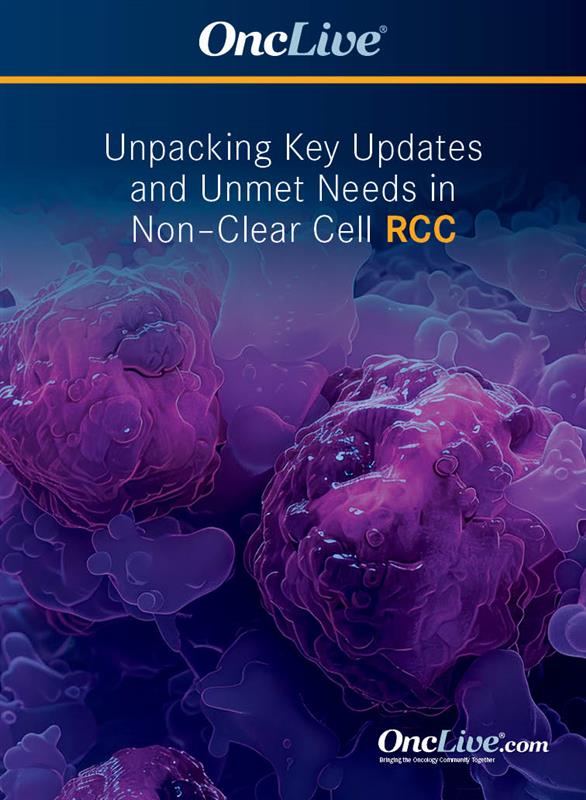News
Article
Supplements and Featured Publications
NCCN Updates Kidney Cancer Clinical Practice Guidelines
Author(s):
The National Comprehensive Cancer Network has published their updated Clinical Practice Guidelines in Oncology for kidney cancer.
RCC | Image Credit: © SciePro
- stock.adobe.com

On July 1, 2024, the National Comprehensive Cancer Network (NCCN) released their updated Clinical Practice Guidelines in Oncology for the treatment of patients with kidney cancer. Version 1.2025 updates the recommendations offered in version 4.2024 of the kidney cancer Clinical Practice Guidelines in Oncology, which were released in May 2024; all recommendations were category 2A unless otherwise indicated.
In terms of primary treatment and follow-up for stage II and III disease (KID-2), the NCCN Kidney Cancer Panel changed adjuvant treatment with pembrolizumab (Keytruda) to a category 1 recommendation from a category 2A recommendation for patients with clear cell histology in the stage II and III pathways. Additionally, adjuvant sunitinib (Sutent) was removed from the guidelines for patients with stage II clear cell disease. The stage II and III pathways were both moved from KID-1 to KID-2.
In the KID-A section, which encompasses the general principles of management for renal cell carcinoma (RCC) the panel added bullets to the general principles of management of RCC noting that thermal ablation is suitable for renal masses of 3 cm or less, ablative techniques may require retreatment to achieve the same result as surgery, stereotactic body radiation therapy (SBRT) is an ablative therapy and can be used in patients with stage I, II, or III kidney cancer who are non-optimal surgical candidates. The panel also added a new subsection to KID-B, titled Principles of Radiation Therapy.
The KID-C section, which describes the guidelines for follow-up, received multiple updates. During active surveillance, the panel now recommends abdominal CT or MRI both with and without IV contrast within 6 months of surveillance initiation, followed by CT, MRI, or ultrasound at least once per year. Following ablative techniques, the panel recommends abdominal CT or MRI, both with and without IV contrast, or a contrast-enhanced ultrasound at 1 to 3 months, 6 months, and 12 months following ablation, then annually thereafter.
Following a partial or radical nephrectomy, patients with stage I disease should receive a baseline abdominal CT or MRI, both with and without IV contrast within 3 to 12 months of surgery, then annually for up to 5 years or longer as clinically indicated. The panel made the same imaging recommendation for patients with stage II disease, except indicating that it should occur every 6 months for 2 years, then annually for up to 5 years or longer if needed.
Patients with stage III disease should receive a baseline abdominal CT or MRI, both with and without IV contrast, within 3 to 6 months, followed by CT or MRI, with MRI being preferred, or ultrasound as a category 2B recommendation, every 3 to 6 months for a minimum of 3 years, then annually up to 5 years. Patients with relapsed and surgically unresectable stage IV disease are advised to undergo CT or MRI, both with and without IV contrast to assess baseline pretreatment or before observation.
The principles of systemic therapy for relapsed or stage IV disease (KID-D) was updated to remove high-dose IL-2d and temsirolimus (Torisel) as being useful in certain circumstances for the frontline treatment of patients with clear cell histology with favorable and poor/intermediate risk and poor/intermediate risk disease, respectively. Additionally, ipilimumab (Yervoy) plus nivolumab (Opdivo) was identified as a preferred regimen for favorable risk patients in the first line. For subsequent therapy in clear cell histology, high-dose IL-2d and temsirolimus were removed from the useful in certain circumstances classification for patients who were both naive to immuno-oncology agents and those who had previously received this treatment class.
For patients with non-clear cell histology, lenvatinib (Lenvima) in combination with pembrolizumab was added to the preferred regimens as a category 2A recommendation and cabozantinib (Cabometyx) plus nivolumab was moved to this section from other recommended regimens. Bevacizumab (Avastin), erlotinib (Tarceva), pazopanib (Votrient), and temsirolimus were all removed from the useful in certain circumstances section, and erlotinib with bevacizumab for select patients with advanced papillary RCC was moved to other recommended regimens.
Finally, in the kidney-specific systemic therapy for patients with confirmed hereditary RCC (HERED-RCC-D) section, erlotinib plus bevacizumab was shifted from useful in certain circumstances to another recommended regimen for patients with hereditary leiomyomatosis and RCC. Cabozantinib in combination with nivolumab was added to useful in certain circumstances as a category 2A recommendation for this patient population. For patients with tuberous sclerosis complex, everolimus was moved from useful in certain circumstances to a preferred regimen and sirolimus was added to the other recommended regimens as a category 2A recommendation.
Reference
NCCN. Clinical Practice Guidelines in Oncology. Kidney cancer, version 1.2025. Accessed July 16, 2024. https://www.nccn.org/professionals/physician_gls/pdf/kidney.pdf










